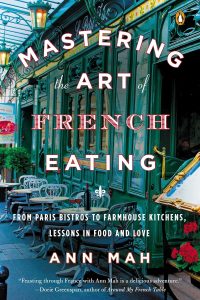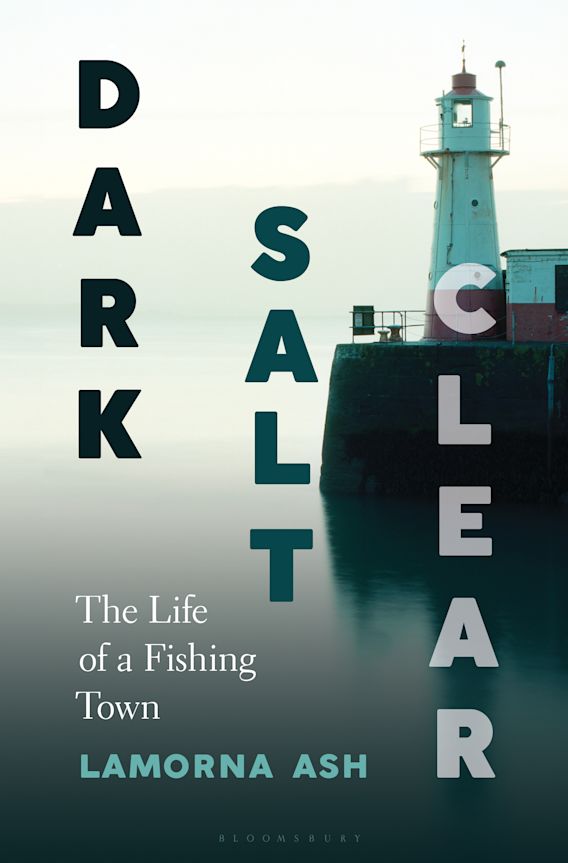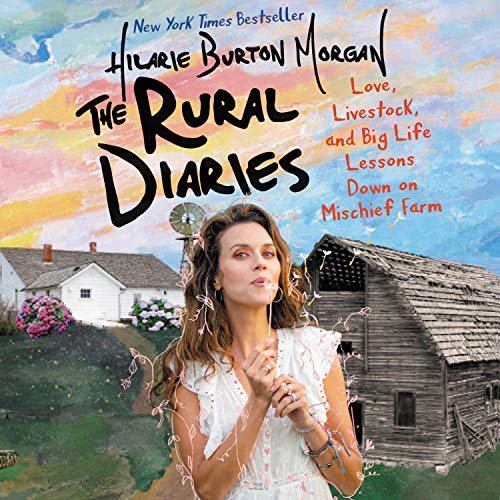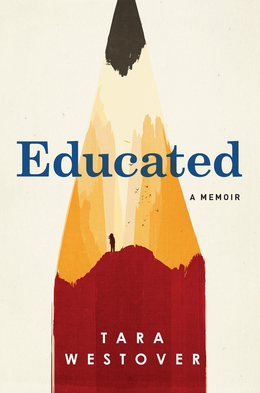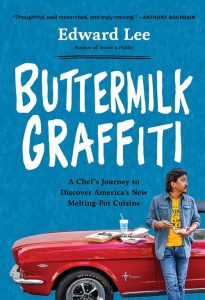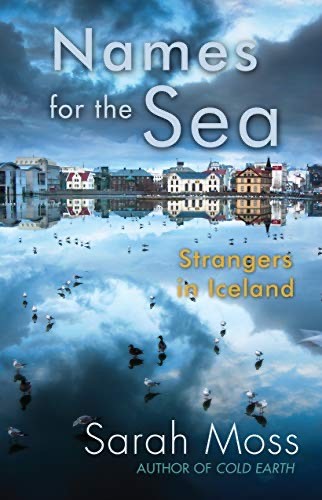Search the Blog
Categories
- Books & Reading
- Broadband Buzz
- Census
- Education & Training
- Friday Reads
- General
- Grants
- Information Resources
- Library Management
- Nebraska Center for the Book
- Nebraska Libraries on the Web
- Nebraska Memories
- Now hiring @ your library
- Preservation
- Pretty Sweet Tech
- Programming
- Public Library Boards of Trustees
- Public Relations
- Talking Book & Braille Service (TBBS)
- Technology
- Uncategorized
- What's Up Doc / Govdocs
- Youth Services
Archives
Subscribe
Author Archives: Laura Mooney
Friday Reads: Mastering the Art of French Eating by Ann Mah
When Ann Mah moved to Paris in 2008, she envisioned three glorious years of exploring the French cuisine. Living in Paris was a dream come true for Ann, a freelance food writer, and she had always imagined exploring it with her “favorite person,” her husband. The couple was accustomed to moving frequently, but after only a month in Paris, her husband, a foreign diplomat, was called to serve in Baghdad for a year. Ann is suddenly forced to change her expectations and explore France on her own.
Mastering the Art of French Eating: From Paris Bistros to Farmhouse Kitchens, Lessons in Food and Love focuses on Ann Mah’s first year in Paris. Each chapter is devoted to a different French dish like steak frites, crepes, soupe au pistou, and cassoulet. She also explores the history of each dish and connects with those who make them today. Recipes are included if you want to make them at home.
Her need for crepes reminded me of my Chinese mother, who can’t go more than a day without a bowl of rice, or my Italian friend Gianfranco, who requires regular infusions of pasta, or even Didier, who once told me that he missed cheese so much on a trip to South Africa that he ate an entire wheel of Camembert on the airplane home. Crepes, I realized, were a Breton’s comfort food.
The strengths of this memoir are in the exploration of French cuisine and its history, but it is also about navigating loneliness and independence, and exploring identity. Although Ann has a lot of experience traveling and living abroad, she is not comfortable doing those things alone. Her experience has always been with a parent or partner. At times I wanted to reach into the book and shake her as she wastes a lot of time wallowing in loneliness. She struggles to find her own joy, but by connecting with others, she also learns about herself.
How does a cross-cultural seesaw affect a person’s identity? Perhaps if I learned more about Alsace and its cuisine, I could better understand what might happen to me, an American of Chinese ethnicity who changed countries every three to four years.
If you want to explore more of Ann Mah’s writing, you can also check out two of her novels inspired by France in Nebraska Overdrive.
Mah, Ann. Mastering the Art of French Eating: From Paris Bistros to Farmhouse Kitchens, Lessons in Food and Love. Penguin Books, 2013.
Friday Reads: Two O’Clock on a Tuesday at Trevi Fountain: A Search for an Unconventional Life Abroad by Helene Sula
Have you ever dreamed of living abroad? Helene Sula was determined to make that dream a reality, and set out to craft a life filled with travel. Her memoir Two O’Clock on a Tuesday at Trevi Fountain: A Search for an Unconventional Life Abroad, chronicles Sula’s journey, which now includes a business in the travel and content creation space.
But I understand now that I can dream bigger. I didn’t have to stick with the same lifestyle that everyone around me seemed content to slip into when it didn’t feel right for me, even when self-doubt crept in and I wasn’t always sure for myself or my chosen path.
The first half of the book focuses on Sula’s early travel experiences that sparked her love of travel, and details her struggles in finding a fulfilling career. She knew that she loved traveling and writing, but breaking into existing media platforms was challenging. She decided to go out on her own and develop a business on her own terms that would allow her to travel and live abroad. The result was Helene in Between, a popular travel blog and Instagram account. In 2016, with the business still in its infancy, Helene and her husband packed up their two dogs and a few belongings and moved to Heidelberg, Germany.
Once in Germany, the Sulas faced various obstacles, including securing a Visa which would allow them to stay for more than a few months. There were also the challenges that come with developing a new business and navigating a new country and culture. Despite living in a place that literally looks like a fairytale, Helene struggled with things many of us do like work-life balance, making new friends, and social media pressures. She often presents as extraverted and enthusiastic, yet she is very open in sharing the insecurities she faces as she finds her way.
Two O’Clock on a Tuesday a quick read. Sula writes in a breezy, conversational style that reflects her years of blogging and content creation. If you enjoy a travel memoir and are interested in how a new generation of travel writers are navigating the evolving digital landscape, you might enjoy Helene’s story. You can also find Helene Sula’s blog at heleneinbetween.com and her Instagram is @heleneinbetween. She currently lives in the UK and recently completed the Cotswold Way, a 100 mile walk through the English countryside.
Sula, Helene. Two O’Clock on a Tuesday at Trevi Fountain: A Search for an Unconventional Life Abroad. Blue Star Press, 2024.
Friday Reads: The Midcentury Kitchen by Sarah Archer

If you have a midcentury house like me, you may wonder what your kitchen originally looked like. Mine likely underwent several unfortunate remodels before my time, but it still seems to have its original footprint. I’ve often pondered what I would do if I renovated. Would I scrap the midcentury footprint or embrace it? I stumbled upon the Mid Mod Midwest podcast and Instagram account where architect Della Hansmann tackles various topics related to midcentury remodeling. She recommended Sarah Archer’s book on midcentury kitchens for inspiration and historical context, so I decided to pick up a copy. If you are interested in midcentury design history or advertising history, you might like Sarah Archer’s The Midcentury Kitchen: America’s Favorite Room, from Workspace to Dreamscape.
The first thing I noticed was the bounty of colorful advertisements and photographs showing over-the-top kitchens, including space-age dream kitchens and television sets. This book isn’t about builder basic reality, but it is still a great reference for the midcentury color palettes and the trophy kitchens. Additionally, Archer takes the reader through the history of American kitchen design trends from prewar examples through the 1970s. She also looks at the history and evolution of advertising, and analyzes the messaging corporations were bombarding American consumers with to try to get them to buy more and more.
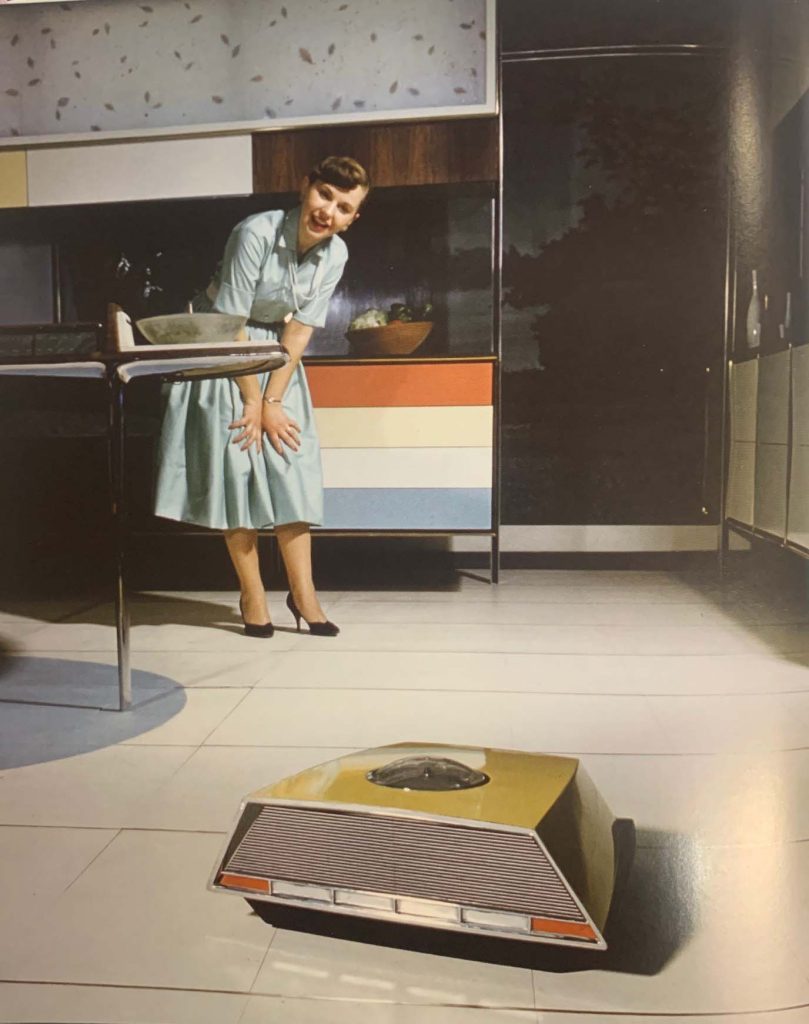
Archer takes a brief look at processed food marketing and the sweet spot companies landed on to help sell more product: make it appear easy, but not too easy. A psychologist who supposedly consulted with the Betty Crocker company, theorized that adding fresh eggs to a box cake mix would strike the right balance between convenience and still feeling like baking. Packaged icing was another sweet spot, marketing to both convenience and creativity. Similar marketing strategies were used with gelatin and canned soups. Archer also theorizes that perhaps we can draw a similar parallel to the marketing and appeal of contemporary meal kit companies today.
Fun Fact: The industry standard 36″ high countertop is based on the height that worked for industrial engineer Lilian Gilbreth. Unless you are 5’7″, it probably doesn’t work well for you.
Archer also examines gender stereotypes in midcentury kitchen adverting, and shows examples of how shifting attitudes in the 1960s were sometimes reflected in ad campaigns. They usually missed the mark, and reinforced what they saw as traditional gender roles for women. Companies tried to capitalize on other cultural shifts, incorporating “counterculture” aesthetic into design. Trendy 1960s kitchens could have psychedelic wallpaper, and pastel pallets gave way to wood and warm tones like harvest gold and avocado green.
The Midcentury Kitchen offers a lot to digest, whether you are looking for design inspiration or interested in learning more about advertising history. It may also help readers think more about the advertising we are bombarded with today.
After reading the book, I also discovered that Della Hansmann interviewed Sarah Archer in 2021 on her Mid Mod Remodel podcast. If you are interested in listening to their conversation about midcentury kitchens, they cover some of the high level history from the book as well as preservation and renovations thoughts on living in our midcentury kitchen footprints today.

Archer, Sarah. The Midcentury Kitchen: America’s Favorite Room, from Workspace to Dreamscape, 1940s-1970s. The Countrymen Press, 2019.
Friday Reads: Dark, Salt, Clear by Lamorna Ash
My favorite book discoveries are often found nestled amongst travel guides. While guidebooks often shrink small towns into succinct paragraphs, and weigh their significance based on subjective criteria suited for outsiders, I love a book that digs deeper into a place. Dark, Salt, Clear: The Life of a Fishing Town is one of these finds.
Lamorna Ash is a twenty-something Londoner, who ventures to the Cornish coastline to learn about fishing. Although she is an outsider, she has roots in Cornwall. Her mother was raised there and named her daughter for a Cornish village. Lamorna settles in Newlyn, a town centered on the fishing industry, steeped in tradition, but also rapidly changing. The locals quickly welcome her into their lives and workplaces, allowing her access to the various enterprises, including participating in the catch, processing fish, and observing the wholesale auction in an ever changing global market.
Dark, Salt, Clear is not just a story about fishing. It’s about the people, the place, and the complex beauty of it all. Ash peppers her story with poetry and prose from others who experienced the sea and its coastlines. The book’s title comes from the poem “At the Fishhouses” (1947) by Elizabeth Bishop:
“It is like what we imagine knowledge to be:
dark, salt, clear, moving, utterly free,
drawn from the cold hard mouth
of the world, derived from the rocky breasts
forever, flowing and drawn, and since
our knowledge is historical, flowing, and flown.”
Ash is also adept at interweaving her own poetic observations about life and the natural world, and often reflects on the things she learns from the people she meets including captains, deckhands, birdwatchers, fishmongers, processors, barkeeps, and geologists.
“A geologist’s task is to see beyond the ways in which time tries to smooth out difference, examining layers in order to isolate each sift to our world, to feel every fault line. We discuss how hard this is to do this with people, to imagine our lives not as one continuous line, but comprised of hundreds of versions, stacked up behind us, and hundreds more ahead of us too, like those pairs of facing mirrors that make your reflection curl up infinitely on either side of you.”
The book not only explores what it means to work in the fishing industry, but also what it means to live in a place that is so connected to the sea. As a person who grew up in a small coastal town in the Pacific Northwest, I was intrigued to learn about another coastal town across the globe. Books, like travel, can broaden our horizons, but also connect us. People in Cornwall look for the illusive “Green Flash” just like the residents of my hometown. The fishing industry everywhere is effected by globalization and climate change. Small seaside towns struggle with similar issues like tensions between tourism and industry. Fishing families across the globe are impacted by metal health issues, tragedy, and grief.
If you are curious about the natural world and the human experience in a small town across the Atlantic, check out Dark, Salt, Clear. While I picked up a physical copy of this book from my local library, you can also read it as an ebook through the Nebraska OverDrive Libraries.
Ash, Lamorna. Dark, Salt, Clear: the Life of a Fishing Town. Bloomsbury, 2020.
Friday Reads: The Rural Diaries by Hilarie Burton Morgan
Growing in a small town, I had romantic notions of what it might be like be a farm kid. I would grow pumpkins, sweet corn, and strawberries. I could have as many animals as my heart desired, and not be limited by a tiny backyard or city codes. Over time, these longings waned, yet I still find myself curious about people that take that leap and bravely (or sometimes naively) switch up their life completely and follow a big dream. In Hilarie Burton Morgan’s case that meant trading city life for Mischief Farm in upstate New York.
Some of you may know Hilarie Burton Morgan for her acting career. She is best known for roles on One Tree Hill and White Collar. In 2009 she began dating The Walking Dead actor Jeffrey Dean Morgan and they married in 2019. Frankly, and I don’t usually have much interest in celebrity autobiographies unless I’m a fan of their work. I wasn’t familiar with any of Hilarie’s roles, but after recently listening to an interview about her second book, Grimoire Girl, I was intrigued. I found her spirited, smart, and a compelling storyteller. I decided to start with the audio version of her first book, The Rural Diaries, which is narrated by the author.
On the surface The Rural Diaries could seem like the plot of a cheesy Christmas movie, which is fitting since Hilarie has starred in several Christmas movies in recent years. The book tells of the meeting and evolution of her relationship with Jeffrey Dean Morgan, their decision to buy a cabin in upstate New York, and the couple’s love affair with the small town of Rhinebeck. Every leading actor needs a best friend and, in this case, the Morgans became friends with fellow Rhinebeck residents Paul Rudd and his spouse Julie Yaeger. When the owner of a beloved local candy shop passed away, the two couples purchased it. The Morgans also decided to put down real roots in the community and purchased a larger farm property they dubbed Mischief Farm.
The Rural Dairies is more than idealistic candy shops and romanticized rural life. Yes, they do acquire a menagerie of animals and grow a garden as you might expect, but there are other layers to the story. The farm helps Hilarie reconnect to her Virginia roots and she shares a variety of recipes accompanied by stories. The book also delves much deeper into other parts of Hilarie’s life, including the challenges of relationships and becoming a parent. After struggling with infertility and loss, she discovers meaning in acts of service. She finds solace in community and the deep connections built in their beloved small town.
Overall the book is a compelling mix of humor, heart, and heartbreak. I recommend the audio book as Hilarie’s narration adds emotion and layers to her storytelling. You can hear and get a better feel for her Virginia roots that influence her traditions, world view, and ability to tell a good story. I will definitely be giving her second book a read.
Morgan, Hilarie Burton. The Rural Diaries: Love, Livestock and Big Life Lessons Down on Mischief Farm. Harper One, 2020.
Friday Reads: Educated by Tara Westover
As a relatively new Nebraska Library Commission employee, I have thoroughly enjoyed learning about the various collections at the Commission, including the impressive book club kits. I’m always curious to see what is being shipped out to libraries across the state on any given week. Knowing my interest in non-fiction, my colleague pointed one of the memoirs in the book club kits: Educated, by Tara Westover. It was not yet on my Libby wish list, so I had to add it, and I later listened to it as an audiobook.
Tara Westover was raised by a fundamentalist Mormon family in rural Idaho. Her parents coached their children to say they were “homeschooled” if anyone inquired, but in reality Tara spent most of her childhood working alongside her father and brothers in the family scrapyard. Her parents were suspicious of many things in the world outside their secluded family. They rejected formal education and modern medicine, preferring to rely on faith and homeopathy. Her father was obsessed with preparing for the end of times, and compulsively stockpiled food and supplies. He distrusted everything about the government and chastised most outsiders as socialists who were influenced by the Illuminati.
Tara’s childhood was filled with fear and sadness. She experienced horrific violence, shaming, and threats from an older brother. The family culture taught that women should be submissive and modest, and she was frequently shamed or witnessed the shaming of other women. But Tara was also inspired to learn and to leave. She decided to follow in the footsteps of an older brother who was self-motivated to study, take the ACT, and go to college.
Tara’s challenges did not disappear after enrolling at BYU at the age of seventeen. Much of the book deals with her collegiate life and self-discovery. Tara’s journey had many ups and downs as she navigated a world she was unfamiliar with, and she dealt with a lot of push and pull from her family, who disputed her claims of abuse. They have continued to disagree with her perspectives, and her mother later published a book of her own.
Educated covers a lot of heavy topics including abuse, mental illness, and many layers of family trauma. But it is also a story about self-discovery, belonging, and finding a voice, which many readers will likely connect with. Educators and those who work with youth may find inspiration in the power of mentoring those without family support to find opportunities and strive to do the big things they never imagined they could do. Larger themes of facing fears and finding strength also run through the book. One of my favorite things Tara discovers is “books were not tricks and I was not feeble.”
Westover, Tara. Educated. Random House, 2018.
Friday Reads: Buttermilk Graffiti by Edward Lee
What is American cuisine? Should we use the term “authentic” to describe a recipe or cuisine? These are just two of many questions that Edward Lee explores in his book Buttermilk Graffiti. Much like American cuisine, Buttermilk Graffiti is an amalgamation. Although the book is part memoir and part cookbook, it primarily focuses on the culinary traditions and stories of immigrants. At times it has the feel of a Bourdain-like food travel show, mixed with history and self-reflection. Lee explores the history of place, migration stories, and the personal histories of individuals whose culinary traditions started across the globe. As much as Lee attempts to better understand the vastness of American cuisine, he also explores his own place in American food culture, and shares fifty recipes inspired by the foods he encounters.
If you are unfamiliar with Edward Lee, he is a chef and restaurateur from Louisville, Kentucky. His culinary style has many influences, including his Brooklyn childhood, his Korean heritage, and the two decades he has lived in Kentucky. He entered the television realm by competing on Top Chef in 2011, and was featured on The Mind of a Chef in 2014. Lee published his first cookbook and memoir, Smoke and Pickles, in 2013. His Louisville restaurant 610 Magnolia boasts a modern approach to southern cooking.
Lee is a compelling storyteller and approaches people and their food cultures with curiosity and empathy. As part of this project he visited more than a dozen cities and explored many food traditions and cultures: Nigerian, Vietnamese, German, Scandinavian, Peruvian, Chifa, Cambodian, Uyghur, Arabic, a Kosher deli, and Louisville soul food. He often came away with more questions than answers and will leave you with many things to ponder:
- Does our education in global food depend on global tragedies that bring immigrants to this country?
- Is there some other way that we can honor the foods of other nations without the tragedy?
- When looking for the “authentic” food of a specific culture, are we looking for a nostalgia that doesn’t exist?
- Is cooking the food of others appropriation or learning?
“I wonder if in 100 years Americans will eat bibimbap without knowing where it came from. Isn’t that already happening to foods such as tacos and pizza? Or can we go back and recalibrate these beloved foods every time a new wave of immigrants comes to America?”
Lee reveals the complexity of food traditions and cultures and shows that there is no monolithic or “authentic” version of any particular food. Each chef’s personal story makes their recipe unique. At the same time, he shows connections between individuals and their traditions. The elder Scandinavians he meets in Seattle value the nostalgia of certain foods much like his own father, who was a Korean immigrant.
“You have your own story and your own history, and your own connections to make. There is good food to be discovered everywhere. All it takes are an adventurous palate and an inquisitive mind. You can link both to the foods that sit in your memories.”
At times Lee’s personal stories seem to fall into a familiar pop culture stereotype for chefs, focusing on what’s supposed to be edgy or rebellious. As Buttermilk Graffiti progresses, however, the reader gets a fuller picture of Lee’s life as a son, husband, and father, and what has shaped him as a chef. He shares vulnerable stories and does a lot of personal reflection, including sharing how he has pushed back against what a man of Korean ancestry in America is supposed to be.
Lee is a compelling writer who believes in the power of stories. If you are a fan of food writing and food culture, I think you will find many of these stories powerful and thought provoking as well.
Lee, Edward. Buttermilk Graffiti: A Chef’s Journey to Discover America’s New Melting-Pot Cuisine. Artisan, 2018.
Friday Reads: Names for the Sea: Strangers in Iceland by Sarah Moss
When the days are short and it’s too cold to spend much time outdoors, what kind of books do you reach for? I often seek out a travel memoir. Those I connect with most inspire me to reminisce about my own travel or pique my interest in learning more about a place I’ve never been. When looking for a new read to get me through the cold and dreary season, Names for the Sea: Strangers in Iceland jumped out at me. Several people have recently told me about their travels to Iceland and suggested I add it to my ultimate travel wish list, so I decided to download the e-book and learn more.
Names for the Sea isn’t exactly a travel memoir. It is the story of a British family living and working in Reykjavik during 2009-2010, and the stories of Icelanders met during their stay. Author Sarah Moss, is a British novelist and professor of literature who dreamed of living and working in a foreign country. A temporary position at the University of Iceland caught her eye. After she accepted the position, Sarah and her family put most of their possessions into storage and moved to Reykjavik. Sarah’s husband and two young children joined her on the adventure. The first chapters of the book revolved around arranging schooling for the children and various issues pertaining to parenting, settling into a new teaching job, and setting up a home in an unfamiliar place. The book is not just a memoir of their daily life. It is also peppered with stories of various Icelanders who provide a fascinating window into Icelandic history and culture. The Moss family stories and Icelandic narratives don’t always fit together seamlessly, and Sarah’s negativity is a bit tiresome at times. The book’s strengths are the Icelanders’ stories and the Moss family’s sporadic interactions with the land and environment.
“The aurora are unsettling partly because they show the depth of the space, and falsity of our illusion that the sky is two-dimensional, and partly because it’s hard to convince your instinct that something bigger than you and grabbing at the sky isn’t out to get you.”
Sarah had a difficult time settling into Icelandic life. She seemed crippled by various fears including the worry that everyone saw her as a “foreigner,” and that she didn’t fit in. Her fears limited her activities in Iceland, and seemed to impact some of her perceptions. Nevertheless, she had a lot of curiosity about Icelandic history and culture. Her colleagues helped her set up meetings with various people to learn about topics that included elves and ghosts, farm life, culinary history, poverty, politics, Icelandic knitting, and volcanic eruptions. These conversations seemed a bit forced to me, as the interactions didn’t happen organically, and she often centered herself in the stories a bit too much for my liking. The Icelandic stories are fascinating, however, and they piqued my interest in learning more about their culture.
“And when the milk lorry came it would give you three books for that week, and you’d give him the three books that he gave you last week, from the library, and he’d take those to the next farm, so there’d be a continual march of books around the sveit with the milk lorry.”
Sarah heard riveting accounts of previous volcanic eruptions and the Moss family got to experience their own volcanic event with the eruption of Eyjafjallajökull. This volcanic eruption is one of the few events that motivated Sarah to travel outside Reykjavik to experience rural Iceland. The family took few opportunities to explore the greater country during their year. Financial constraints were one of the reasons for their lack of exploration. Iceland was in the midst of recovering from a major financial crisis and prices were extremely high. But Sarah also feared driving outside the city and other fears and negativity also seemed to impact her choices. It was not until they decided to leave Iceland and later return for a vacation, that her attitude shifted and she was more willing to explore beyond Reykjavik. Moss seemed much more content in Iceland as a “tourist” rather than trying to fit in as a resident.
Moss’s attitudes and opinions sometimes seemed self-righteous and she never fully reflected on her own biases. Although she acknowledged that fear and the overwhelming feeling of being “foreign” limited her exploration and participation in Icelandic life, her opinions sometimes appeared to be rooted in the biases of being a outsider who was inexperienced with the climate, culture, and negotiating rural environments. This left me questioning if some of her criticisms were well-researched or were instead impacted by her own fears, biases, and what sometimes seemed like jealousy. I think many travelers or people living in a new place where you don’t speak the language can identify with fears and self-doubt, but there were some things about Sarah Moss that I just didn’t connect with. For me the book was a good reminder that although visiting a new place can make you grateful for certain things in your own homeland, it’s important to check one’s own biases. Approaching new people and cultures with empathy and being open to try things outside one’s comfort zone make travel a much more enjoyable experience.
Although I didn’t always connect with Sarah Moss, I really enjoyed this book overall. Seeing a new place through the eyes of an author who is also an outsider often encourages me to reflect on my approach to travel. The Moss family’s story kept me reading and interested in how they would navigate different challenges like the short winter days and unfamiliar foods. Overall, this book was also an intriguing introduction into Icelandic culture and history, and I definitely want to learn more.
Moss, Sarah. Names for the Sea Strangers in Iceland. Catapult, 2013.
